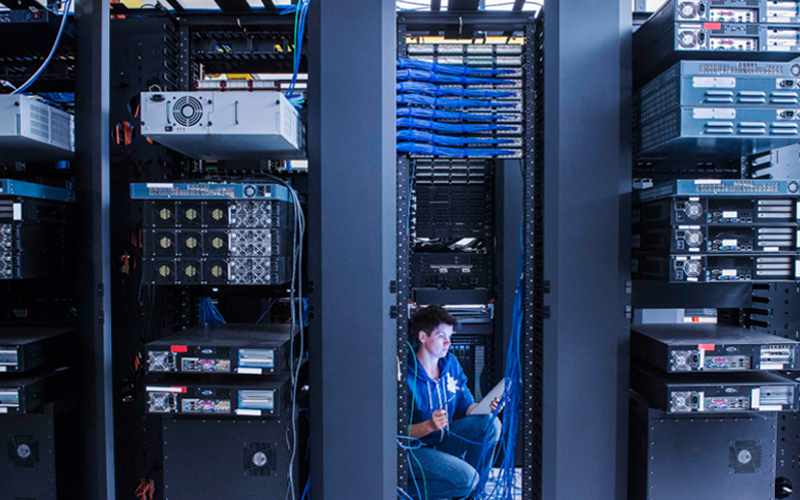Access to contemporary technology is shaping the structure of modern businesses, and the current upsurge in the implementation of IoT is set to transform how organisations manage their inventory. The incorporation of IoT in inventory management can help streamline a business’s supply chain by facilitating real-time data access to monitor, optimise, and manage inventory efficiently. Efficient inventory management can help reduce costs, improve cash flow, boost customer satisfaction, improve supplier relationships, and more.
Let’s take a closer look at what IoT-based inventory management solutions have to offer.
What is IoT?
IoT, or the Internet of Things, is a network of devices, objects, and systems that connect to the Internet and are capable of gathering, analysing, and exchanging data. Devices on this network have sensors and software that enable them to share data, communicate, and complete assigned tasks automatically without human intervention.
What role can IoT play in inventory management?
IoT simplifies the process of monitoring and tracking inventory items by employing RFID technology. You can assign unique identification numbers to articles and code them into the RFID tags. RFID scanners at various locations throughout the supply chain can read comprehensive information about these items, such as manufacturing information, model details, and more. You can instantly update this data to the cloud. Businesses can then use this data to efficiently manage inventory and even track individual items through the supply chain in real time.
You can direct this data towards predictive analytics, making it possible to foresee demand and manage supply accordingly. IoT-enabled systems can also ensure that inventory levels never drop beyond a certain level by automatically sending out orders as required to prevent shortages. A modern IoT-based inventory management system can hence boost supply chain efficiency, optimise inventory, cut costs, and contribute towards improved customer service.
Benefits of IoT inventory management solutions
IoT systems leverage their connectivity, scalability, and intelligence to enhance the efficacies of inventory management systems. Let us explore some of the key benefits of incorporating IoT and network inventory management system in business operations.
Heightened visibility
Businesses can gain detailed insights into various aspects of their inventory, including current stock, the whereabouts of items, and their status, with real-time inventory tracking. This improved visibility facilitates informed decision-making, prevents shortages and overstocking, and streamlines inventory management.
Access to accurate inventory data
Manually managing inventory is a time-consuming process that isn’t immune to human errors. IoT-based inventory management solutions automate data collection to guarantee precise and current inventory data. This precision results in heightened order accuracy, fewer inconsistencies, and increased customer satisfaction.
Better efficiency and productivity
Businesses that incorporate modern IoT inventory management systems need not worry about manually reviewing stock or physically searching for inventory items. IoT inventory management solutions speed up inventory management procedures, decrease the need for extra manpower, and let workers concentrate on higher-value tasks. The outcome of this is improved performance and productivity, leading to cost savings.
Accurate demand planning
With access to real-time stock data, businesses can pre-emptively detect low-stock scenarios and prompt timely restocking. This approach minimises instances of stock shortages or missed sales and optimises inventory in response to changes in demand. Precise demand forecasting results in enhanced customer service and diminished costs associated with holding inventory.
Better collaboration across the supply chain
Real-time inventory data encourages smooth cooperation among all entities across the supply chain. Vendors, manufacturers, distributors, and retailers can use the accurate information at their disposal to make informed decisions, coordinate production, and enhance logistics to boost overall supply chain efficiency.
Required infrastructure
Before a business can adopt an IoT-based inventory management system, it must have the necessary infrastructure in place to support the data transmission and connectivity demands of IoT technology and devices. Key requirements include:
- A fast and stable internet connection to aid real-time transfer of inventory data to the cloud
- A modern wireless network to transfer data between devices
- On-premises or cloud-based data processing and storage capabilities that can handle large amounts of data
It is important to review and upgrade these aspects of your organisation’s infrastructure before attempting to set up an IoT inventory management solution.
How can Infosys BPM help?
Networks play a crucial role in connecting a vast array of devices and systems. An effective network inventory management system like the Infosys BPM NIMS is an indispensable asset for businesses looking to thrive in this rapidly changing landscape. NIMS covers the full network lifecycle, from planning and building to operation, all within a single system.
For organisations on the digital transformation journey, agility is key in responding to a rapidly changing technology and business landscape. Now more than ever, it is crucial to deliver and exceed organisational expectations with a robust digital mindset backed by innovation. Enabling businesses to sense, learn, respond, and evolve like living organisms will be imperative for business excellence. A comprehensive yet modular suite of services is doing precisely that. Equipping organisations with intuitive decision-making automatically at scale, actionable insights based on real-time solutions, anytime/anywhere experience, and in-depth data visibility across functions leading to hyper-productivity, Live Enterprise is building connected organisations that are innovating collaboratively for the future.







